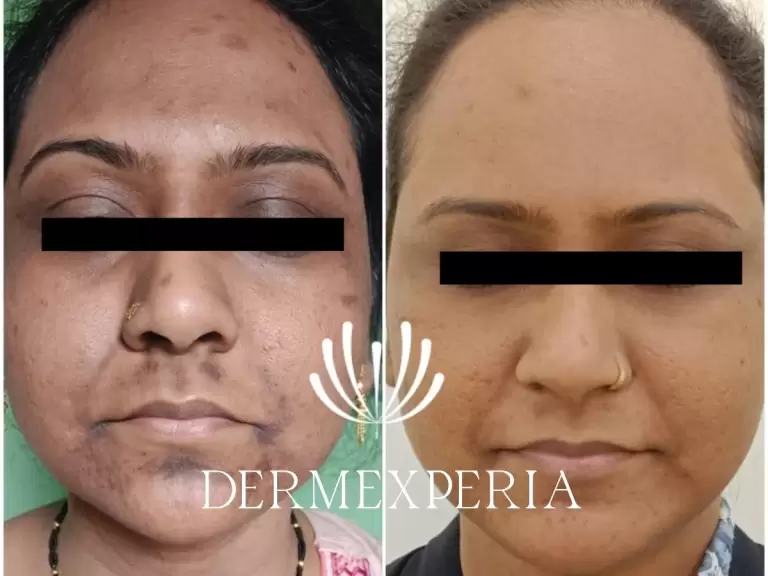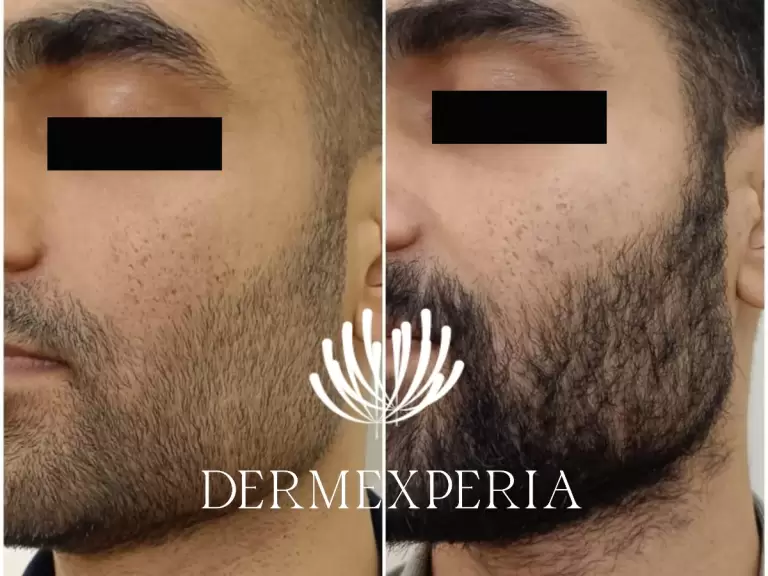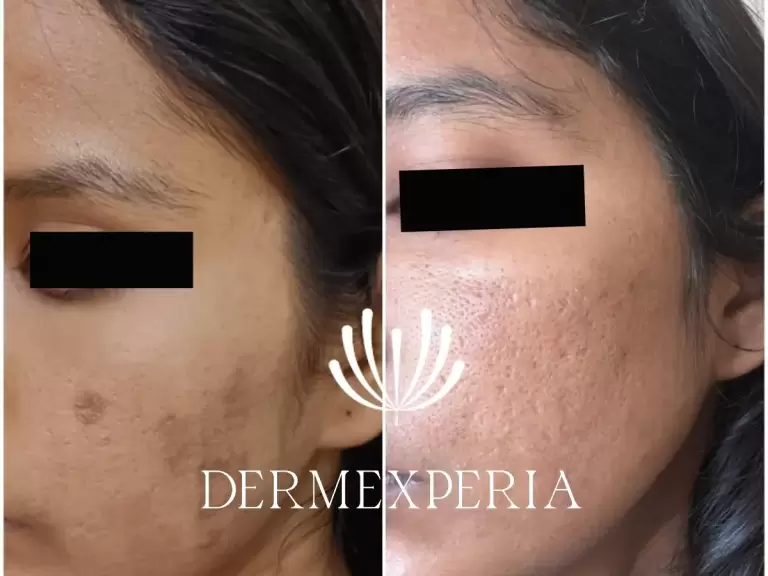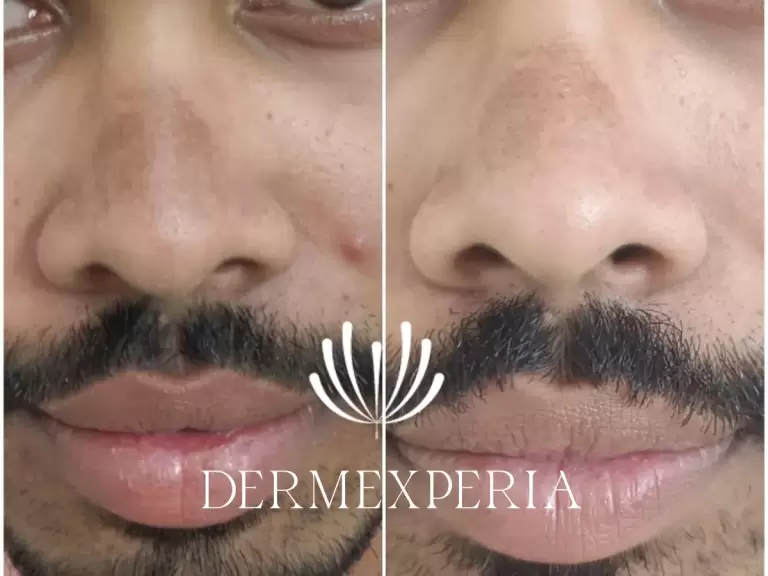What is Skin Pigmentation
Skin pigmentation refers to the color of the skin, which is primarily determined by the presence and concentration of melanin, a pigment produced by cells called melanocytes. Melanin’s role is to absorb and dissipate ultraviolet (UV) light, protecting the skin from UV damage. Variations in pigmentation can result from several factors, including genetics, sun exposure, and hormonal changes. Common pigmentation issues include hyperpigmentation, where excess melanin leads to darker patches or spots, and hypopigmentation, where reduced melanin results in lighter areas. These conditions can be influenced by factors like age, inflammation, and certain medications. Proper skincare, sun protection, and, in some cases, medical treatments can help manage pigmentation concerns and maintain an even skin tone.
Types of skin pigmentation
Hyperpigmentation:
Hyperpigmentation occurs when there is an excess production of melanin, the pigment responsible for skin color. This results in darker areas of skin compared to the surrounding areas. Common causes of hyperpigmentation include sun exposure, age spots, melasma, and post-inflammatory hyperpigmentation. Conditions such as acne scars and eczema can also lead to areas of increased pigmentation. Treatment options often include topical creams containing ingredients like hydroquinone, retinoids, or alpha hydroxy acids, as well as procedures such as laser therapy and chemical peels.
Hypopigmentation:
Hypopigmentation, on the other hand, is characterized by a reduction in melanin production, leading to lighter skin patches. This can occur due to conditions such as vitiligo, albinism, or post-inflammatory hypopigmentation. Vitiligo causes the skin to lose pigment in certain areas, resulting in white patches, while albinism is a genetic condition that results in little to no melanin production. Treatments for hypopigmentation may include topical corticosteroids, phototherapy, and sometimes surgical options like skin grafting.
Common Hypopigmentation Disorders
Vitiligo: Characterized by the loss of skin color in patches due to the destruction of melanocytes (the cells responsible for pigment production). It can occur anywhere on the body and often progresses over time.
Albinism: A genetic condition where individuals have a complete or partial lack of melanin, the pigment responsible for skin, hair, and eye color. This can lead to lighter skin and hair and increased sensitivity to the sun.
Post-inflammatory Hypopigmentation: Occurs after skin inflammation or injury, such as burns, eczema, or psoriasis. The affected area may become lighter than the surrounding skin due to a reduction in melanin production.
Pityriasis Alba: A common condition in children and young adults, presenting as light patches of skin, often on the face. It is thought to be related to mild eczema or dermatitis.
Tinea Versicolor: A fungal infection that disrupts the normal pigmentation of the skin, leading to lighter or darker patches. The fungal growth affects the skin’s ability to produce melanin.
Common Hyperpigmentation Disorder
Melasma: Characterized by dark, uneven patches on the skin, commonly found on the face. It is often triggered by hormonal changes, such as during pregnancy or with oral contraceptives.
Age Spots (Liver Spots): These are small, darkened areas on the skin that appear due to prolonged sun exposure. They are more common in older adults.
Post-inflammatory Hyperpigmentation (PIH): Occurs after an injury or inflammation to the skin, such as acne, eczema, or burns. The affected area becomes darker as the skin heals.
Sunspots (Solar Lentigines): Dark spots that develop on sun-exposed areas of the skin, commonly on the hands, face, and shoulders, due to cumulative sun exposure over time.
Freckles: Small, flat, pigmented spots that are usually hereditary and often become more prominent with sun exposure.
What is Melasma
Melasma is a common skin condition characterized by the development of dark, discolored patches on the skin, particularly on the face. These patches typically appear on the cheeks, forehead, nose, and chin, and are often symmetrical. Melasma is caused by an overproduction of melanin, the pigment responsible for skin color, and is frequently triggered by factors such as sun exposure, hormonal changes, pregnancy, or the use of oral contraceptives. It is more prevalent in women, especially those with a darker skin type, and can be exacerbated by ultraviolet (UV) light. Treatment options for melasma may include topical creams, chemical peels, and laser therapy, but prevention through sun protection is crucial for managing and reducing the appearance of melasma.
How to treat Melasma
Melasma, characterized by dark, irregular patches on the skin, typically occurs due to hormonal changes, sun exposure, or genetic predisposition. To effectively treat melasma, a comprehensive approach is often required. First and foremost, protecting the skin from further sun damage is crucial. This involves using broad-spectrum sunscreens with a high SPF daily, even on cloudy days, and avoiding prolonged sun exposure. Topical treatments play a significant role; hydroquinone, a common skin-lightening agent, can help reduce pigmentation. Other options include topical retinoids, which promote skin cell turnover and can improve pigmentation. Additionally, products containing azelaic acid and kojic acid can be beneficial as they inhibit melanin production. For more stubborn cases, procedures like chemical peels, microdermabrasion, or laser therapy may be considered, but these should be performed by a qualified dermatologist. Consistency with treatment and sun protection is key to managing melasma effectively.
Best doctor for skin pigmentation
At Dermexperia, we take pride in having some of the best doctors for skin pigmentation in Mumbai. Our dermatologists are highly qualified and experienced in treating a wide range of skin conditions. They are dedicated to providing compassionate care and helping patients achieve their skin goals.
Dr. Harish Balaji holds an MD in dermatology from the premiere KEM hospital in Mumbai. After rigorous training at the Hoboken Medical Center, New Jersey (USA), he attained the coveted Educational Commission for Foreign Medical Graduates certification with global merit, to join the ranks of distinguished Indian dermatologists to hold both these honours. Trained in hair transplant, Dr. Harish has over five thousand successful cases to his credit. He believes Beauty lies in balance and harmony.
Hailing from India’s premier institutions, JJ and KEM Hospitals in Mumbai, Dr. Shefali Saini went on to become one of the very few Indian dermatologists to hold the prestigious membership of the Royal College of Physicians, United Kingdom, as well as the Specialty Certificate Examination, awarded by the British Association of Dermatologists. She endeavors to bring global standards of care to each of her patients. Her mantra for beauty is consistency over intensity.
Why choose dermexperia for skin pigmentation
At Dermexperia, we offer a comprehensive range of services for skin pigmentation concerns, tailored to address various types of pigmentation issues such as hyperpigmentation, melasma, and age spots. Our treatments are designed to reduce discoloration and restore a more even skin tone.
We provide advanced options including chemical peels, which help exfoliate the skin and promote the removal of pigmented layers, and laser therapy, which targets and breaks down pigmentation at a deeper level. For more persistent cases, we offer targeted lightening treatments and customized skincare regimens, which can help to enhance skin clarity and reduce the appearance of dark spots over time.
Our team of experienced dermatologists employs the latest techniques and technologies to ensure effective and safe results. We focus on creating personalized treatment plans that address the root causes of pigmentation while considering individual skin types and concerns. At Dermexperia, our goal is to help you achieve a clearer, more radiant complexion through expert care and advanced treatment options.
Conclusion
Pigmentation issues can affect your confidence and quality of life, but with the right treatment, you can achieve clear, even-toned skin. At Dermaexperia, we offer advanced pigmentation treatments, including laser and non-invasive methods, ensuring you receive the best care and results. Our team of expert dermatologists is dedicated to helping you achieve your skincare goals, providing personalized treatment plans and comprehensive support.
For more information on pigmentation treatment costs in Mumbai or to schedule a consultation, contact Dermaexperia today. Let us help you on your journey to radiant, flawless skin.
FAQs
- Can we cure melasma?
Melasma is a chronic skin condition characterized by dark patches, usually on the face. While it may not be “cured” in the traditional sense, it can be effectively managed and treated. Treatments aim to lighten the pigmentation and prevent further darkening. Common approaches include topical treatments (like hydroquinone, tretinoin, and corticosteroids), chemical peels, and laser therapy. - How many sessions are required?
The number of sessions required varies based on the severity of melasma and the type of treatment used. For laser treatments, patients typically need several sessions, often ranging from 3 to 6, spaced about 4 to 6 weeks apart. Topical treatments may take several months to show results. A consultation with a dermatologist will provide a more personalized treatment plan. - Is laser pigmentation treatment painful?
Laser pigmentation treatments are generally well-tolerated, but some discomfort can occur. Patients may experience a sensation similar to a rubber band snapping against the skin. Topical numbing creams are often used to minimize discomfort. Pain levels vary among individuals, and some may experience temporary redness or swelling post-treatment. - Are results of pigmentation treatment permanent?
Results from pigmentation treatments can be long-lasting, but they may not be permanent. Melasma can recur, particularly if the underlying triggers, such as sun exposure or hormonal changes, are not managed. Maintenance treatments and protective measures, such as daily sunscreen use, are important to sustain results and prevent recurrence. - Can pigmentation treatments be combined with other procedures?
Yes, pigmentation treatments can often be combined with other procedures for enhanced results. For example, treatments may be combined with chemical peels, microdermabrasion, or topical therapies. However, it’s crucial to consult with a dermatologist to ensure that the combination of treatments is safe and appropriate for your specific condition. What precautions should I take before and after pigmentation treatment?Before treatment, avoid sun exposure and certain skincare products. After treatment, use sunscreen, avoid direct sun, and follow post-care instructions to promote healing and prevent pigmentation.
Before & After






